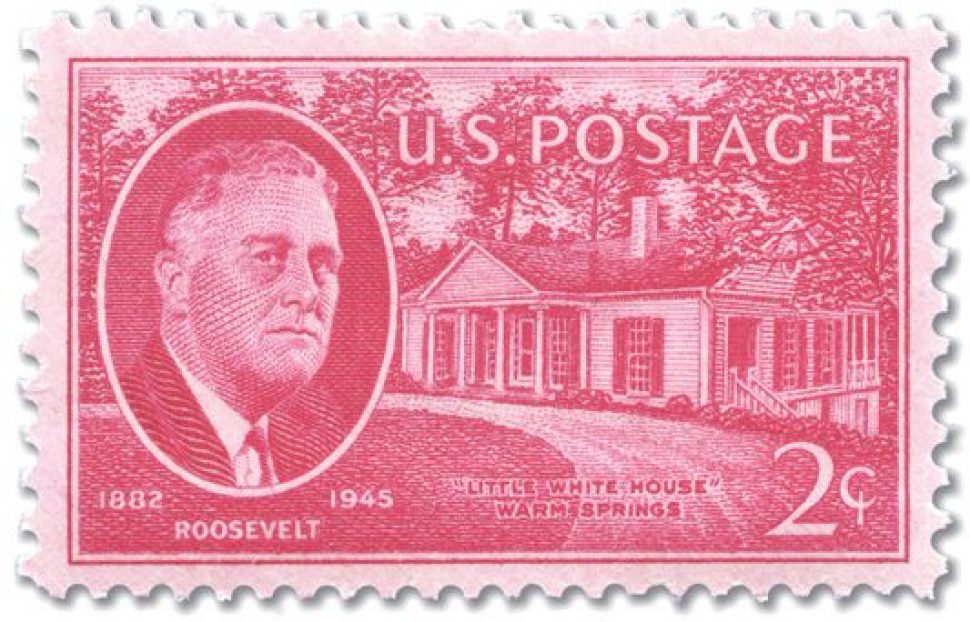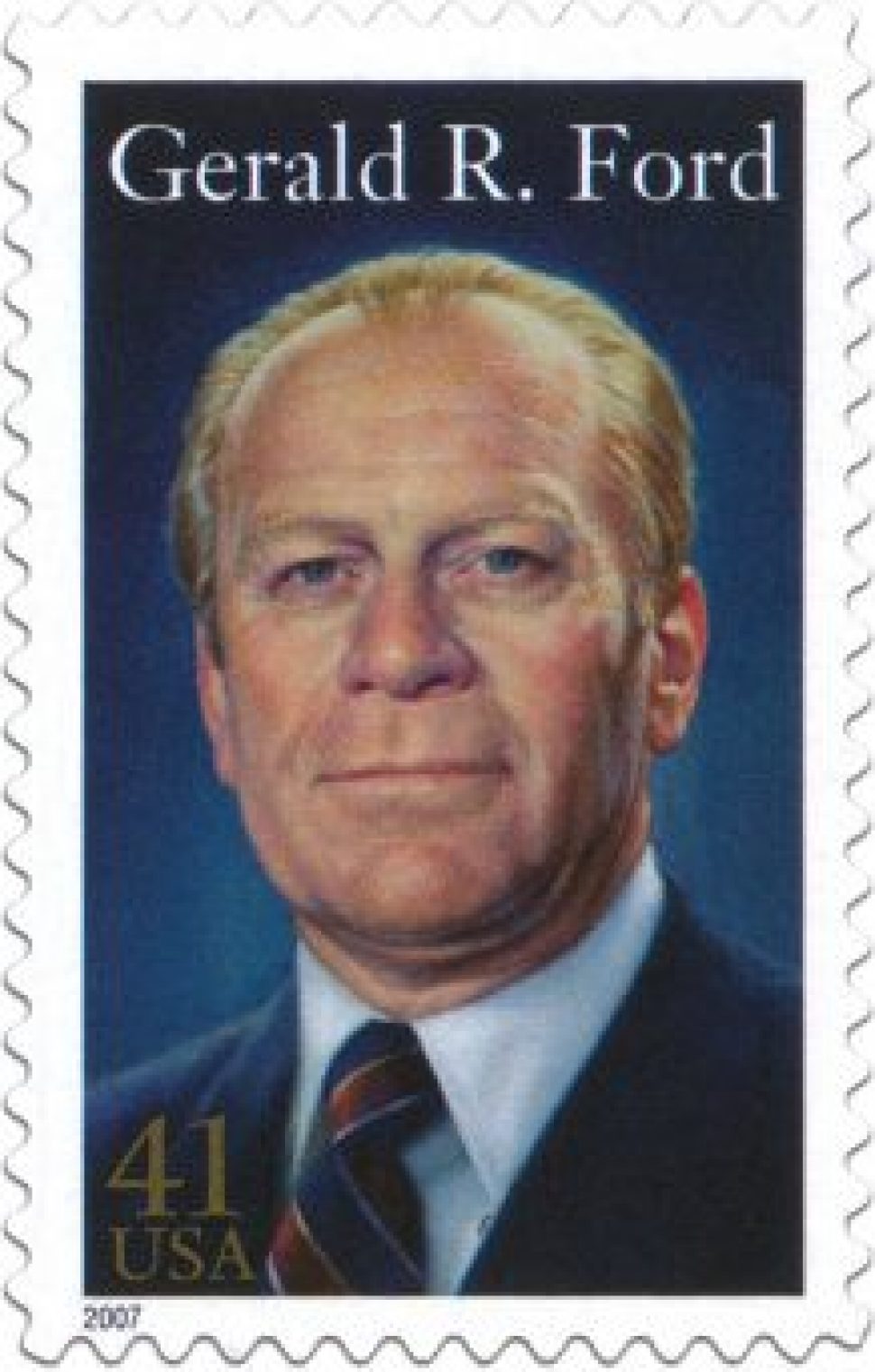In our first article in our three part series on famous stamp collectors, we looked at royalty and philately. In this second instalment, we move from royalty to leaders of the political world.
For many of these stamp-collecting leaders it would seem that philately has served as much needed distraction from the stress and fast pace of political life.
Roosevelt developed an interest in stamps as a child, keen to learn more about the world. Roosevelt suffered from poliomyelitis during the 1920s and stamp collecting is said to have played a crucial role in his recovery. This interest stayed throughout his life and was not just a private hobby. He joined stamp clubs, visited stamp dealers and auctions, as well as stamp shows. He even discussed stamp design with the Postmaster General and made design sketches, sometimes in an attempt to convey a sense of optimism and solidarity during the Depression era. His stamp design sketches included outlines for the 1933 Byrd Atlantic Expedition II stamp (he was friends with Admiral Byrd) and the 1934 Mother’s Day stamp, based on the famous painting, Whistler’s Mother.
Roosevelt was inducted into the American Philatelic Society Hall of Fame in 1945. He is quoted as saying, “I owe my life to my hobbies – especially stamp collecting”. His substantial collection was auctioned in 1946. The National Postal Museum acquired Roosevelt’s stamp design sketches through a donation.
President Gerald Ford, USA
It is said that President Gerald Ford (1913–2006) began stamp collecting as a young boy of around 12 or 13. In a biography of Ford by Hendrik Booraem, the author talks about Ford’s father leading his son towards stamp collecting, because he had relatives who regularly received letters from Argentina. Young Gerald would order an assortment of stamps from dealers, in the hope that he would find a rarity. The Gerald R. Ford Presidential Museum lists his main hobby as stamp collecting.
When Gerald Ford narrowly lost the 1976 presidential election to Jimmy Carter, he wrote to one of his long-time supporters, Congresswoman Edith Green of Oregon (also a stamp collector). He enclosed a signed sheet of 1976 US Bicentennial stamps in thanks for her support.
Interestingly, unlike Roosevelt before him, Ford didn’t publically draw attention to his stamp collecting during his presidency, and sold his collection when he retired.
Nicolas Sarkozy, former president of France
Former French president, Nicolas Sarkozy is also an avid stamp collector, even establishing the Elysée Philatelist Club. His particular interest is said to be Hungarian stamps (his father was Hungarian).
Sarkozy also famously intervened in an auction of letters that were flown out of Paris in 1871 (by air balloon) during the Prussian siege. One such letter was even addressed to Australia and was offered for sale by a Sydney auction house during Sarkozy’s administration. It is believed that he asked the French National Museum to purchase the letter at a world record price.
On a state visit to England, Her Majesty Queen Elizabeth presented Sarkozy with a 2004 Royal Mail stamp issue for the Entente Cordiale, celebrating a century of Anglo-French cooperation. He was also presented with a leather album of stamps by then Californian governor Arnold Schwarzenegger.
The Hon. Philip Ruddock, MP, Australia
In an article by Richard Guilliatt in The Age Good Weekend magazine, first published in 2002, we learn about Philip Ruddock’s keen interest in philately, an interest that started in childhood and has continued through his just over four decades in politics (Ruddock did not contest his seat in the recent Federal election and has instead been appointed Australia’s first Special Envoy for Human Rights).
In fact, it is said that Ruddock and his secretary would tear off the various stamps affixed to the large volumes of correspondence he received during his long career. His father and grandfather were also collectors, and Ruddock still holds their collections too.
Albert “Texas” Green, Former Australian Postmaster General
Albert “Texas” Green (1869–1940) served as the Australian Postmaster General between February 1931 and January 1932. The name “Texas” came because of a six-year trip Green took through America when he was 19. Upon his return from the USA, Green worked as a postal clerk at the Kalgoorlie Post Office and became interested in collecting the stamps of the privately owned postal services that sprung up on the goldfields, when the main post office couldn’t keep up with demand. Green entered politics at a state and then federal level, holding the federal seat of Kalgoorlie from 1922 until his death.
During his time in parliament, Green raised several questions and commented widely on stamp-related matters, including proposing a stamp series depicting Australian industries, advocating for the adoption of recess printing and suggesting that the King George V stamps be abolished. Once he became Postmaster General in 1931, Green set about putting his plans into action.
It is thought that he is the only Postmaster General who was also a stamp collector. Despite his short tenure, Green managed to implement many changes that he thought would benefit collections, including the wider use of recess printing, the introduction of “OS” overprints and, once no longer Postmaster General, the introduction of a stamp vending machine for the Kalgoorlie Post Office.
Part 1: Royalty
Part 3: Sport stars and pop stars
This article was produced at the time of publication and will not be updated.



